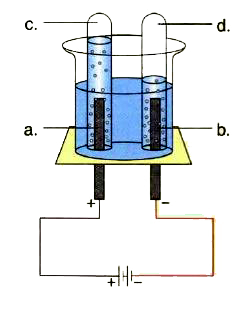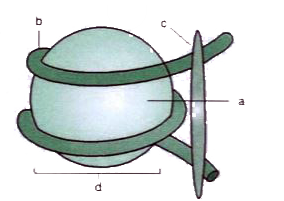Macula lutea is part of
(a) Optic nerve
(b) Sclerotic
(c) Choroid
(d) Retina
Optic nerve
Sclerotic
Choroid
Retina
The correct Answer is:D
To solve the question "Macula lutea is part of," we need to analyze each of the given options to determine which one correctly identifies the location of the macula lutea.
1. Understand the Term "Macula Lutea":
- The macula lutea is a specific area in the eye that is known for its high concentration of photoreceptor cells and is crucial for central vision.
2. Evaluate Option (a): Optic Nerve:
- The optic nerve is responsible for transmitting visual information from the retina to the brain. It does not contain the macula lutea.
- Conclusion: Incorrect.
3. Evaluate Option (b): Sclerotic (Sclera):
- The sclera is the outer layer of the eye, often referred to as the "white of the eye." The macula lutea is not part of this outer layer.
- Conclusion: Incorrect.
4. Evaluate Option (c): Choroid:
- The choroid is the middle layer of the eye, which contains blood vessels and provides nourishment to the eye. The macula lutea is not located in this layer.
- Conclusion: Incorrect.
5. Evaluate Option (d): Retina:
- The retina is the innermost layer of the eye where light is converted into neural signals. The macula lutea is indeed located in the retina, specifically as a yellowish spot that is crucial for sharp vision.
- Conclusion: Correct.
Final Answer:
The macula lutea is part of the (d) Retina.
---
- The macula lutea is a specific area in the eye that is known for its high concentration of photoreceptor cells and is crucial for central vision.
- The optic nerve is responsible for transmitting visual information from the retina to the brain. It does not contain the macula lutea.
- Conclusion: Incorrect.
- The sclera is the outer layer of the eye, often referred to as the "white of the eye." The macula lutea is not part of this outer layer.
- Conclusion: Incorrect.
- The choroid is the middle layer of the eye, which contains blood vessels and provides nourishment to the eye. The macula lutea is not located in this layer.
- Conclusion: Incorrect.
- The retina is the innermost layer of the eye where light is converted into neural signals. The macula lutea is indeed located in the retina, specifically as a yellowish spot that is crucial for sharp vision.
- Conclusion: Correct.
The macula lutea is part of the (d) Retina.
Topper's Solved these Questions
- ENVIRONMENTAL ISSUESBOOK - DINESH PUBLICATION ENGLISHCHAPTER - ENVIRONMENTAL ISSUESEXERCISE - Model test paper-2
100 Videos
- ENVIRONMENTAL ISSUESBOOK - DINESH PUBLICATION ENGLISHCHAPTER - ENVIRONMENTAL ISSUESEXERCISE - Model test paper-3
100 Videos
- ENVIRONMENTAL ISSUESBOOK - DINESH PUBLICATION ENGLISHCHAPTER - ENVIRONMENTAL ISSUESEXERCISE - Assertion and reason
246 Videos
- ECHINODERMATABOOK - DINESH PUBLICATION ENGLISHCHAPTER - ECHINODERMATAEXERCISE - REVISION QUESTIONS
65 Videos
- EVIDENCES OF EVOLUTIONBOOK - DINESH PUBLICATION ENGLISHCHAPTER - EVIDENCES OF EVOLUTIONEXERCISE - CHECK YOUR GRASP
19 Videos
Similar Questions
Knowledge Check
Colour of the eye like blue or black is due to
(a) sclera
(b) choroid
(c) retina
(d) irisAscleraBchoroidCretinaDirisIn myopia, the image is formed
(a) before the retina
(b) on the retina
(c) beyond the retina
(d) on the blind spotAbefore the retinaBon the retinaCbeyond the retinaDon the blind spotWhich one of the following forms the pigmented layer in eye ?
(a) choroid
(b) retina
(c) sclera
(d) foveaAchoroidBretinaCscleraDfovea
Chordates differ from non-chordates in having
(a) Bilateral symmetry
(b) Heart
(c) Notochord
(d) Nerve cord
View SolutionThe region of the vertebrate eye, where the optic nerve passes out of the retina, is called the
(a) fovea
(b) iris
(c ) blind spot
(d) optic chaisma
View SolutionLabel parts a, b, c and d.

View SolutionGiven the area of the retina
1. Macula 2. Fovea centralis 3. Optic disc 4. Periphery of the retina
Choose the arrangement that lists the areas according to the density of cones, starting with the area that has highest density of cones
View SolutionThe auditory receptors are present
(a) in cochlea
(b) in nose
(c) on tongue
(d) in retina
View Solution

